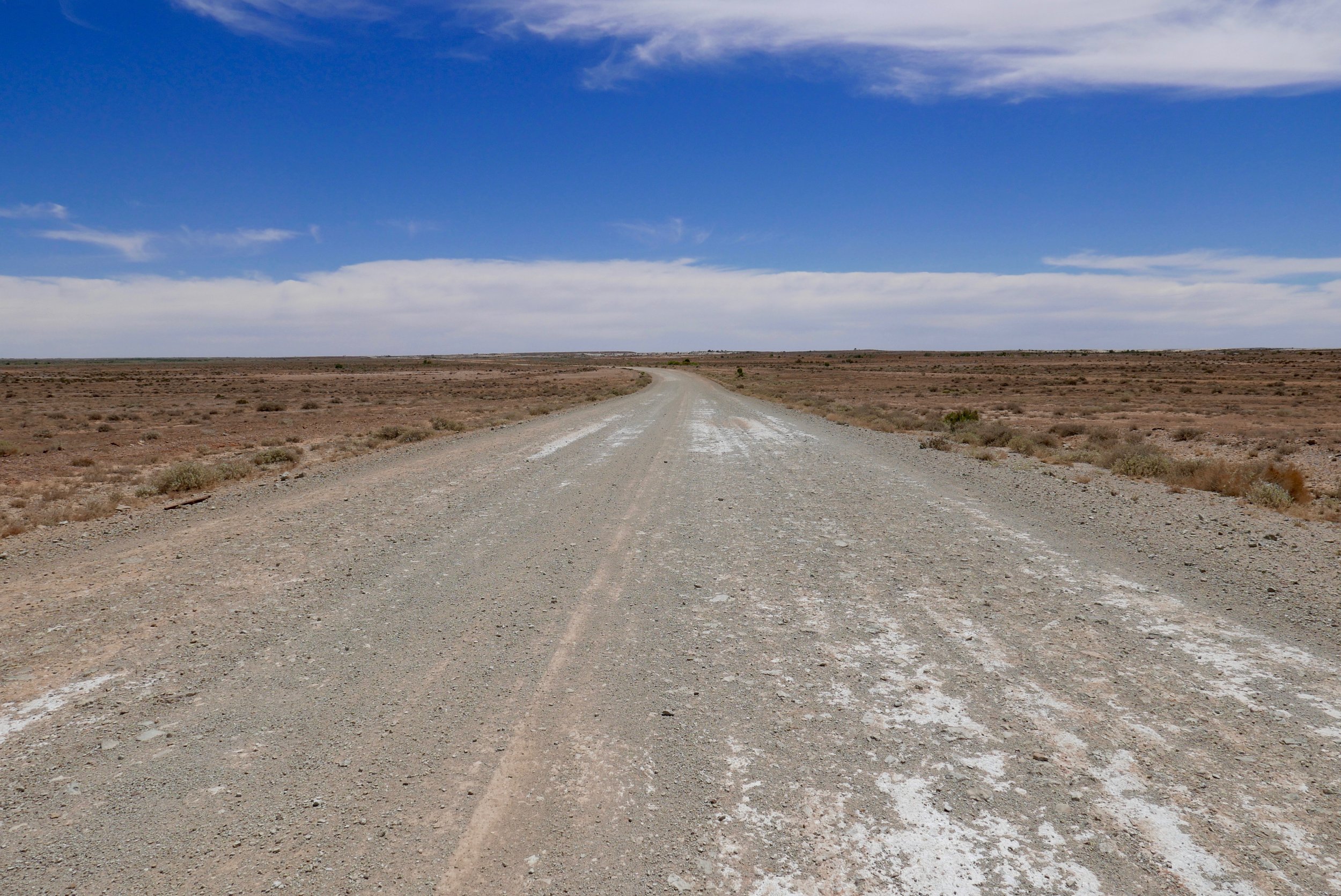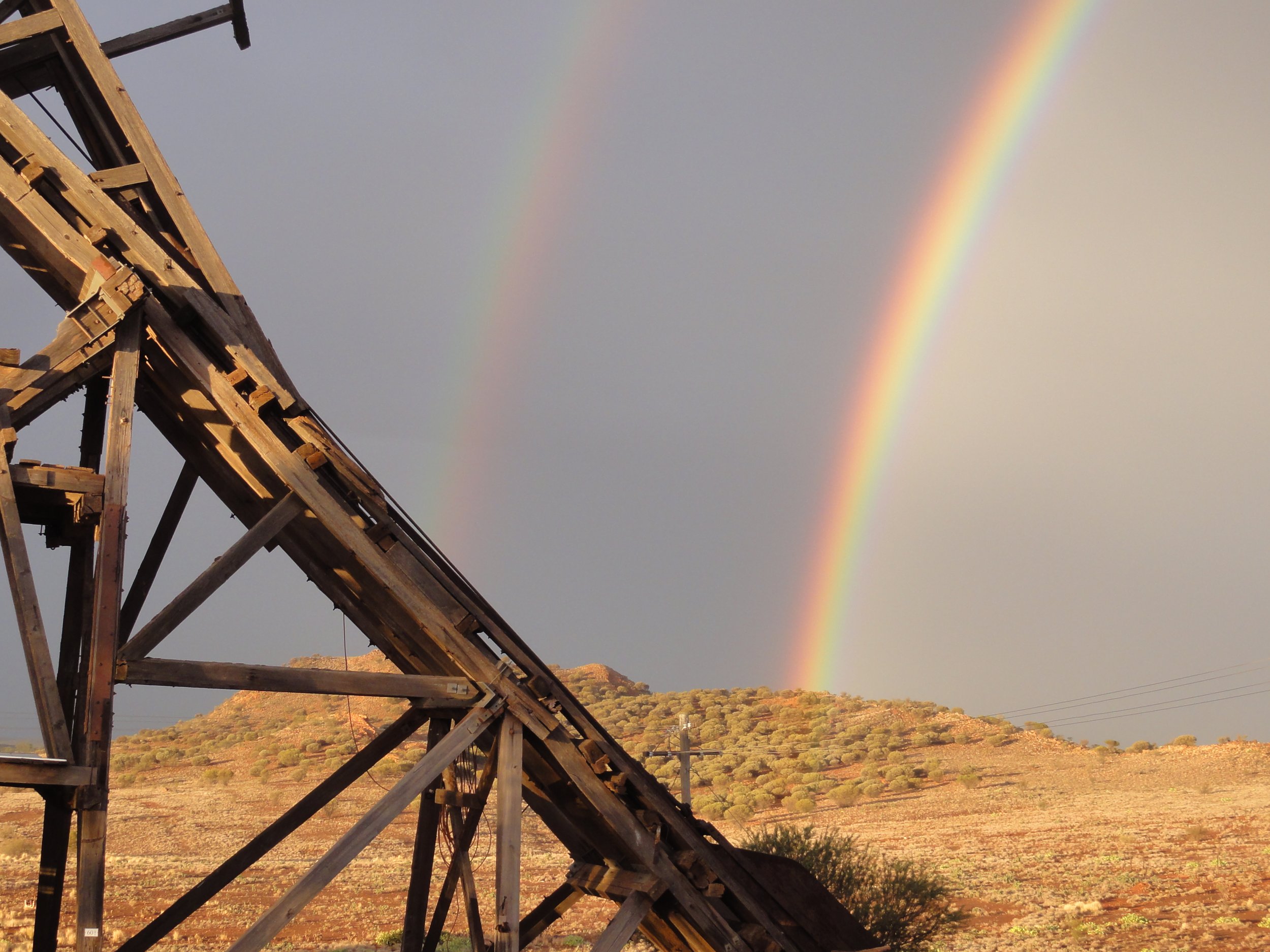This fabulously textured landscape is magnificent exactly as it is. It's mostly flat and stretches as far as the eye can see. At the end of this road is Farina, a wonderful ruin town with a fascinating history.
The road to Farina is anything but boring. Firstly, we were the only ones on it, and that in itself is quite thrilling! The horizon stretches out in front of you forever and you feel like you've gone back in time, except you're in a comfy car and the air conditioner is blasting away. This is an arid, remote, flat country where you'll mostly see clumps of spiky spinifex grasses, some rocky outcrops and if you know where to look, ocre deposits.
We found out about this ruin town from friends who once passed through here. It's located in the basin of Lake Eyre in South Australia, and it's how, I suppose, many people would think the outback looks. Adelaidians refer to this area as the desert and I think that's an apt description.
Farina - what's left of it. A barren, desert landscape with a noticeable silence.
The name Farina comes from Latin, and it means wheat. Astonishingly, this was to be the location for wheat and barley farming! Initially, it was the discovery of a well that prompted this grandiose plan. And the first steps were taken in 1878, when a telegraph office was built. Two years later a 100 adults and 50 children called this outback place home.
It became an important trade centre and the main stop for camel drivers. In just eight years the population doubled and a school was built; the town also included shops, two churches, saddlers, blacksmiths, a police station and hotels, even a brothel. But this was an unforgiving place and the ambitions to develop it into a major wheat growing area failed miserably.
Signs of a former life. What a luxury this bath must been back in those days. A room that was once a private space is now fully exposed and forms an interesting architectural juxtaposition in this desert landscape.
In addition to the lack of rain, the railway expansion and re-establishment saw many families move to different locations. Slowly the town was being vacated, and eventually, the shops, the post office, and the school closed down. The last resident left in 1967.
Today, we are lucky that a passionate and dedicated restoration group have undertaken the enormous task of resurrecting some of Farina's buildings. They started working on this project in 2008 - a labour of love for sure. The volunteer group gather in the winter months of May, June, and July and have made significant progress in piecing together the history, the town layout, excavating sites, installing information boards and stabilising buildings.
This sign post lists some of the notable features of Farina. Looking at this terrain, it's hard to imagine that thoughts of wheat farming would enter the mind. But hopefulness, desperation and risk taking is precisely what characterised settler societies.
Farina definitely has a ghost town feel. As you walk around you're guided by signs and historical information and everywhere you look there is something fascinating or simply beautiful to look at. It's a tactile place. I loved touching the old stone walls and imagining what life was like in such a harsh environment. It's an exciting place for photography too. Mr Fritz and I were clicking away frantically in a desperate attempt to record this special place.
Turns out the locals loved sport! There was a cricket oval, a tennis court, and a golf course. Another thing that kept the townsfolk going was the underground bakery. Incredibly, the very same bakery is fully operational today, but only in the winter months. The volunteers and other travellers get to sample the baked goods during this time and I imagine it must be a real treat in such a faraway place.
This is entrance to the underground bakery! Cool, isn't it? Next time I'd like to head down the narrow stairs to buy a vanilla slice - yum!
At the far end of town, we came across a delightful camping ground with toilets and showers, picnic tables and plenty of trees for shade. I surprised Mr Fritz when I announced I'd love to camp here! He thought my camping days were over, but I changed my mind when I saw this little oasis. I imagined the evenings sitting by the fire, sipping a glass of whiskey and looking up at the stars. In the morning I pictured the emu family grazing right outside my tent - what a fun moment that would be!
This gorgeous lizard was right in the middle of the road as we were leaving Farina. Luckily I was driving and Mr Fritz had his camera ready and took this awesome pic! Notice the spots on the legs and the stripes on the tail.....a work of art!








